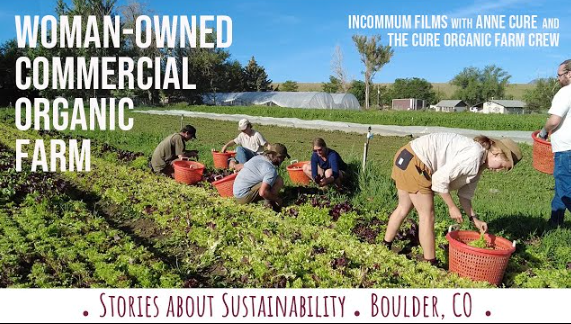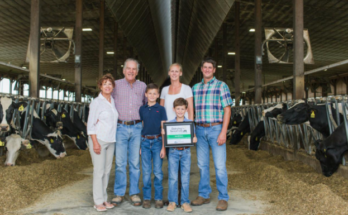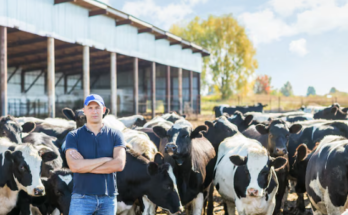Away from the hustles and bustles of the city, Sneh Yadav and Retd Col. Tara Singh are on a mission, to change the way we look at food. Growing up in a traditional farmer family, agriculture was always a part of Sneh’s life and when the time came to choose a new adventure, they didn’t have to think twice before going back to the land. and that was the beginning of Tijara Organic Farms.
### With 10 Acres of Organic Farm and Traditional Wisdom, This “Family Farmer” Can Help You Eat Right
In today’s world, where health-conscious consumers are increasingly aware of the benefits of eating organic and sustainably grown food, a small family farm operating on just 10 acres is proving that farming can be both profitable and impactful. By combining organic farming practices with traditional wisdom passed down through generations, this “family farmer” has carved out a successful niche in the agricultural landscape. Here’s how they manage their farm with a focus on budgeting, crop scheduling, success strategies, and site considerations—all while ensuring that consumers eat right.
#### Budgeting for an Organic Family Farm
Running a 10-acre organic farm is a significant undertaking, but the investment is generally lower than large-scale industrial farming. The budget primarily includes expenses for organic seeds, fertilizers (often compost or manure), tools, irrigation, and labor. For an organic farm of this size, the initial setup can range from ₹2 to ₹5 lakh ($2,500 to $6,000), depending on factors such as the infrastructure needed for irrigation and storage. Over time, the budget may decrease as the farm becomes more established, and the soil quality improves with the use of organic amendments.
Organic certification is another key cost. In India, the certification process can be expensive, ranging between ₹50,000 to ₹1 lakh ($600 to $1,200), but it is an important investment for marketing the farm’s products as certified organic, which can fetch a higher price in the market.
While organic farming can involve higher upfront costs for labor and inputs compared to conventional farming, the long-term benefits, such as access to premium markets (like organic farmers’ markets and local health-conscious grocery stores), usually outweigh the initial expenditures. Additionally, traditional farming practices, like crop rotation and companion planting, often require less synthetic fertilizer and pesticide, lowering ongoing costs.
#### Release Dates and Crop Scheduling
In organic farming, timing is crucial. To ensure the farm produces a variety of fresh produce year-round, careful planning of planting and harvesting schedules is essential. For a 10-acre farm, crop rotation plays a pivotal role in maintaining soil health and preventing pest buildup. Typically, the farm might start with cooler-weather crops like leafy greens, peas, and carrots during the early months of the year. As the season warms, the focus shifts to crops like tomatoes, peppers, cucumbers, and beans, which thrive in the heat.
The release dates, or planting schedules, are often determined by both climate and traditional wisdom. Farmers who use organic methods frequently rely on natural indicators such as moon phases and local weather patterns, knowledge that has been passed down through generations. This approach helps them plant at the most favorable times, which enhances growth and yield.
Staggered planting ensures that harvests are spread throughout the year, keeping a steady supply of fresh produce. For example, crops like lettuce and spinach can be planted and harvested in quick succession, while root vegetables like potatoes and onions can be stored for longer shelf life.
#### Success Strategies for the Organic Farmer
The success of this family farm lies in the harmonious integration of traditional farming wisdom with modern organic practices. Here are some key factors that have contributed to its profitability:
1. **Soil Health**: By avoiding synthetic chemicals and focusing on composting and organic soil amendments, the farm’s soil remains rich in nutrients, which boosts crop quality and yield.
2. **Diversified Cropping**: Growing a wide variety of crops—not just a monoculture—ensures that if one crop fails or underperforms, others will still provide income. This also helps maintain biodiversity, which naturally keeps pests in check.
3. **Direct-to-Consumer Sales**: Rather than relying solely on wholesalers, the farm has successfully tapped into direct-to-consumer sales through local farmers’ markets, online delivery, or even Community Supported Agriculture (CSA) programs. This direct connection with customers often brings in higher prices for organic produce.
4. **Traditional Wisdom**: Drawing on knowledge from earlier generations, the farm has adopted techniques like using neem oil for pest control, practicing rainwater harvesting, and implementing companion planting—all of which reduce the farm’s reliance on costly inputs.
5. **Branding and Storytelling**: The family farm has also invested in branding, highlighting its commitment to organic, sustainable practices, and its family-run heritage. This appeals to consumers who are increasingly looking to support small, ethical farms.
#### Site Considerations for Organic Farming
Choosing the right site for organic farming is vital. The 10-acre farm in question is located in an area with a favorable climate for a wide range of crops. With ample access to water, good soil drainage, and a moderate climate, it provides ideal conditions for organic cultivation. For organic farming, site selection should prioritize factors like:
– **Soil Quality**: Healthy, fertile soil is the foundation of organic farming. A soil test should be conducted before starting to ensure that the land is rich in essential nutrients.
– **Water Access**: Organic farms generally rely on natural water sources like rainwater or wells, and access to a consistent water supply is essential.
– **Climate**: Climate influences the types of crops that can be grown. This particular farm is situated in a region with temperate weather, allowing for a wide variety of vegetables, fruits, and herbs to flourish.
The farm’s location near urban markets also enables easy access to customers, reducing transportation costs and enhancing the freshness of the produce.
#### Conclusion
This family farm, with its combination of 10 acres of organic land and traditional farming knowledge, is a testament to the power of sustainable agriculture. By focusing on organic methods, crop diversity, and direct consumer relationships, the farm has successfully made healthy, sustainably grown food accessible to the community while remaining financially viable. As more consumers seek healthier, more ethical food options, the future of small-scale organic farms like this one looks promising.



